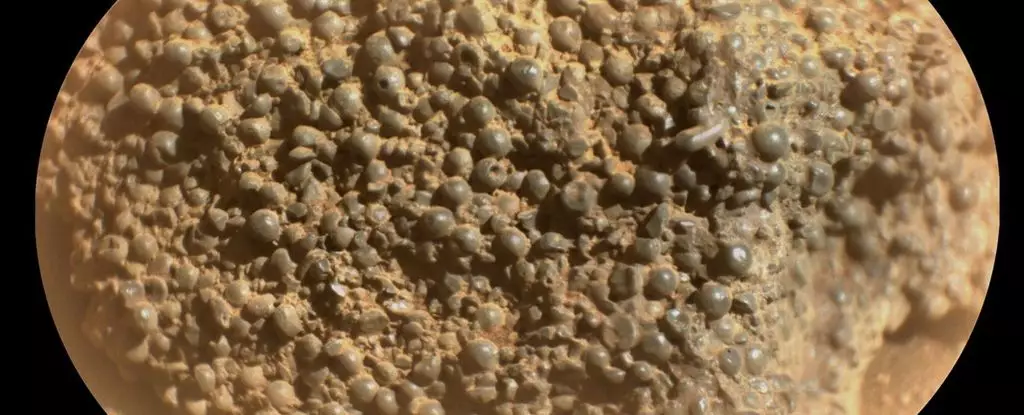Mars has once again fascinated scientists and space enthusiasts alike with a recent discovery by the Perseverance rover. As it maneuvered across Broom Point, located on the scenic lower ranges of Witch Hazel Hill in the vast Jezero Crater, it unearthed a rock formation that has left researchers scratching their heads in bewilderment. Dubbed St. Pauls Bay, the rock sports a strikingly unusual appearance, resembling a cluster of tiny, dark gray spheres—akin to a mass of frogspawn. This odd formation, brimming with intricate details, serves as a stark reminder of how much we are still learning about the Red Planet.
Unraveling the Mystery of Formation
The core of the intrigue surrounding St. Pauls Bay lies not just in its bizarre appearance but also in the questions it raises about its origin. No similar formations have been catalogued in the nearby vicinity, and the rock’s composition remains an enigma. While Earth boasts a range of examples of botryoidal formations—characterized by spherical aggregates of minerals—these earthly counterparts seem to operate under well-established geological processes. The mechanisms at play on Mars could be starkly different, especially since St. Pauls Bay does not neatly fit into known terrestrial categories such as grape agate or hematite.
Is it possible that the rock formed through volcanic activity, where molten rock solidifies etching out spherical shapes? Alternatively, could St. Pauls Bay be a remnant of a meteorite impact, the rapid heating and cooling creating these striking spherules? The scientific community is mulling over these possibilities, aware that understanding the origin of such formations is critical for a comprehensive grasp of Martian geology.
Float Rocks and Their Significance
One of the more perplexing characteristics of St. Pauls Bay is that it is classified as a “float rock,” meaning it is located away from its source bedrock. This complicates the quest for answers, as its original position remains a mystery. The absence of context regarding its formation is a critical hindrance, as it makes it difficult to determine the environmental conditions—be they fiery or aqueous—that shaped this geological oddity.
Interestingly, observations conducted by orbital missions have pinpointed a neighboring layer of dark rock, leading scientists to speculate that it could be the birthplace of St. Pauls Bay. This raises a tantalizing prospect: if further investigations conducted by Perseverance can confirm this link, we could be on the brink of understanding an entirely new chapter of Martian geology.
Why St. Pauls Bay Matters
The implications of understanding formations like St. Pauls Bay extend beyond mere curiosity; they offer a deeper insight into the planet’s potential for past water activity. Past missions have uncovered various spherical formations, often interpreted as products of aqueous chemistry. Could it be that St. Pauls Bay provides clues to ancient Martian environments that once harbored liquid water, sustaining life in some capacity? The stakes are high, and the excitement is palpable as the scientific community anticipates further discoveries.
In short, the unusual configuration of rocks like St. Pauls Bay not only expands our knowledge of Mars but also invites us to rethink geological processes both on our world and beyond. Each finding takes us one step closer to unraveling the intricate tapestry of Mars’ history and its potential for hosting life, both past and present.


Leave a Reply